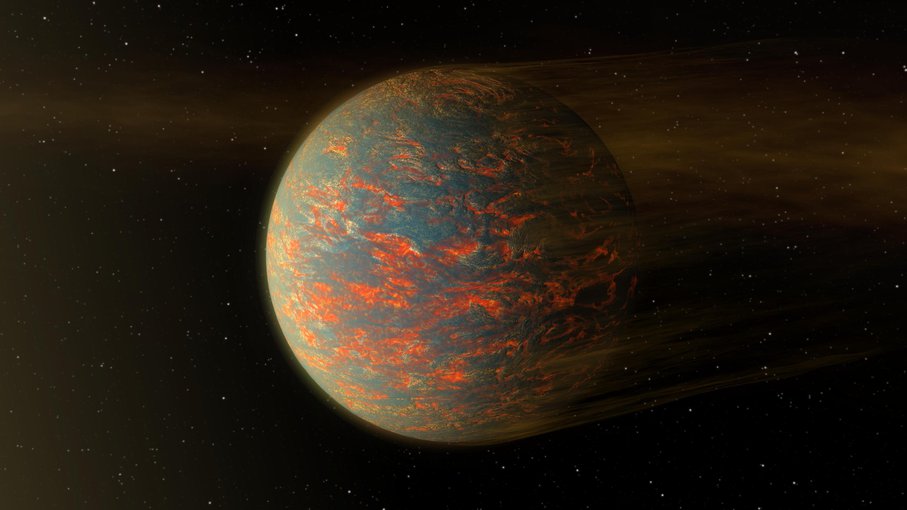
Oct. 10, 2023
Research Highlight
Fizzy Super Earths and Lava Worlds

This illustration shows one possible scenario for the hot, rocky exoplanet called 55 Cancri e, which is nearly two times as wide as Earth. New data from NASA's Spitzer Space Telescope show that the planet has extreme temperature swings.Image credit: NASA/JPL-Caltech.
NASA-supported scientists have examined how telescope observations of exoplanets could be affected by the presence of molten lava on distant worlds. The study focuses on Super-Earth planets orbiting close to their host stars and that are thought to have partially molten mantles.
The mantle of a planet is a region that lies between the crust and the core, and generally composes the most massive layer of a planet’s structure. A partially molten mantle means that molten rock (magma) makes up part of the mantle material.
Magma has different properties than solid rock and can make its way to the surface through geological processes like volcanic eruptions. When magma flows together, it can form large-scale magma oceans at the surface or within the mantle itself. The presence of such oceans might change interpretations of a planet’s features when observed remotely from Earth with ground- and space-based instruments.
In the recent study, scientists updated software called ExoPlex, which is used to model planet interiors. Using the updated model, they found that three classes of mantle structures are likely to occur on the types of planets in the study: the presence of a mantle that consists entirely of magma, the presence of a surface magma ocean, and the presence of two magma oceans separated by a solid rock layer (one at the surface and one below the rock). Each of these scenarios could result in different observational features for a planet.
The study, “Fizzy Super-Earths: Impacts of Magma Composition on the Bulk Density and Structure of Lava Worlds,” was published in the Astrophysical Journal.